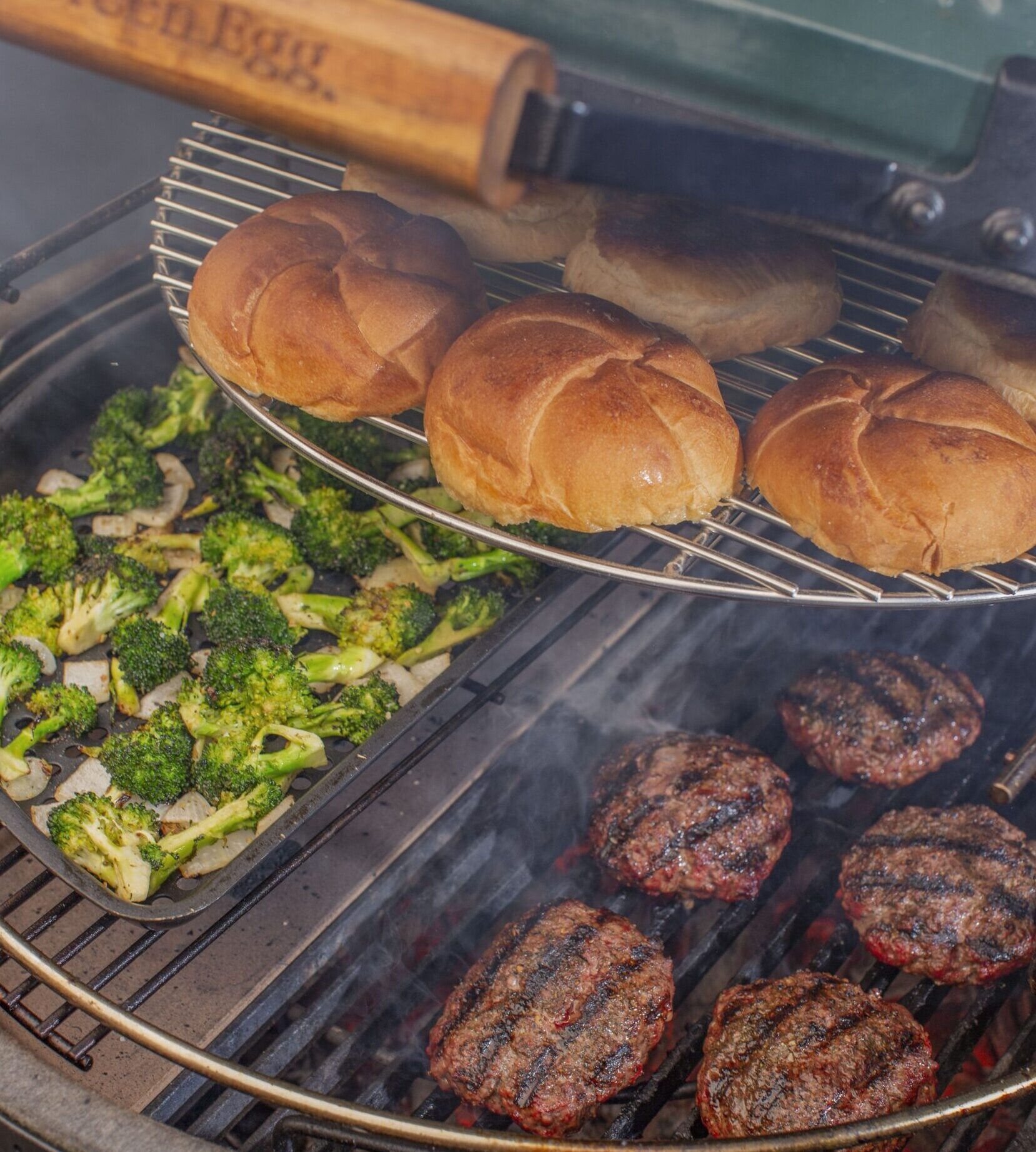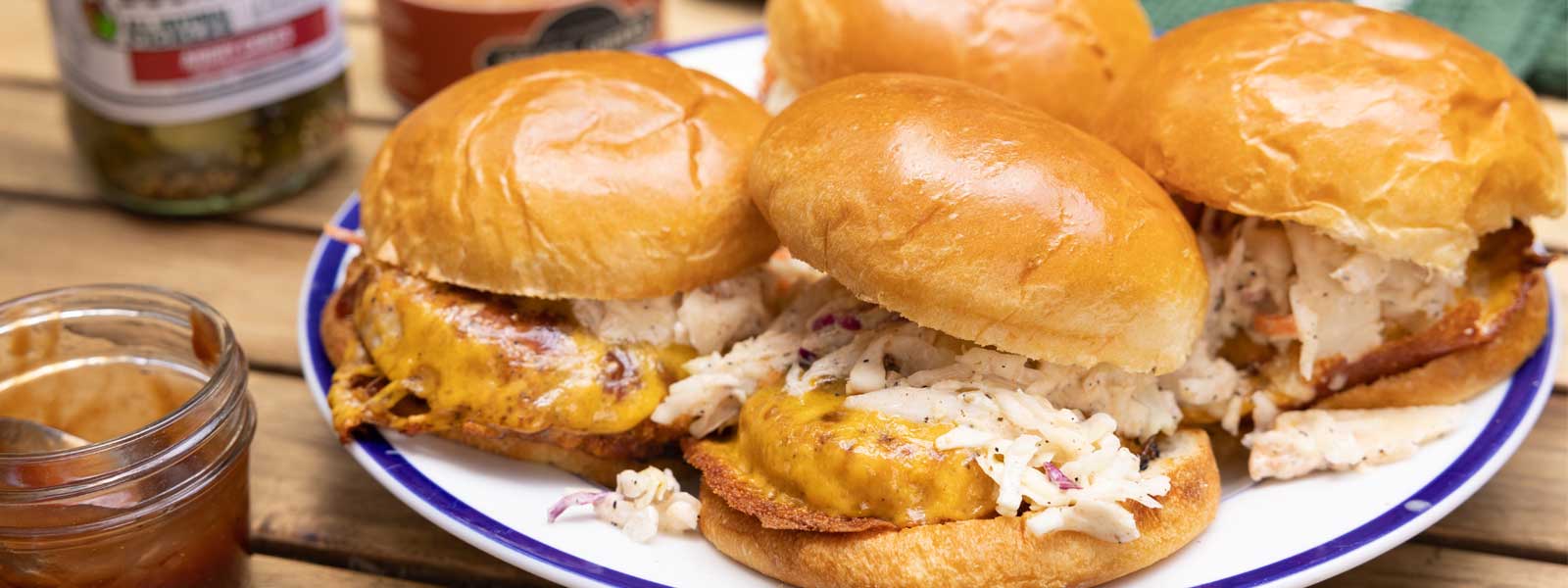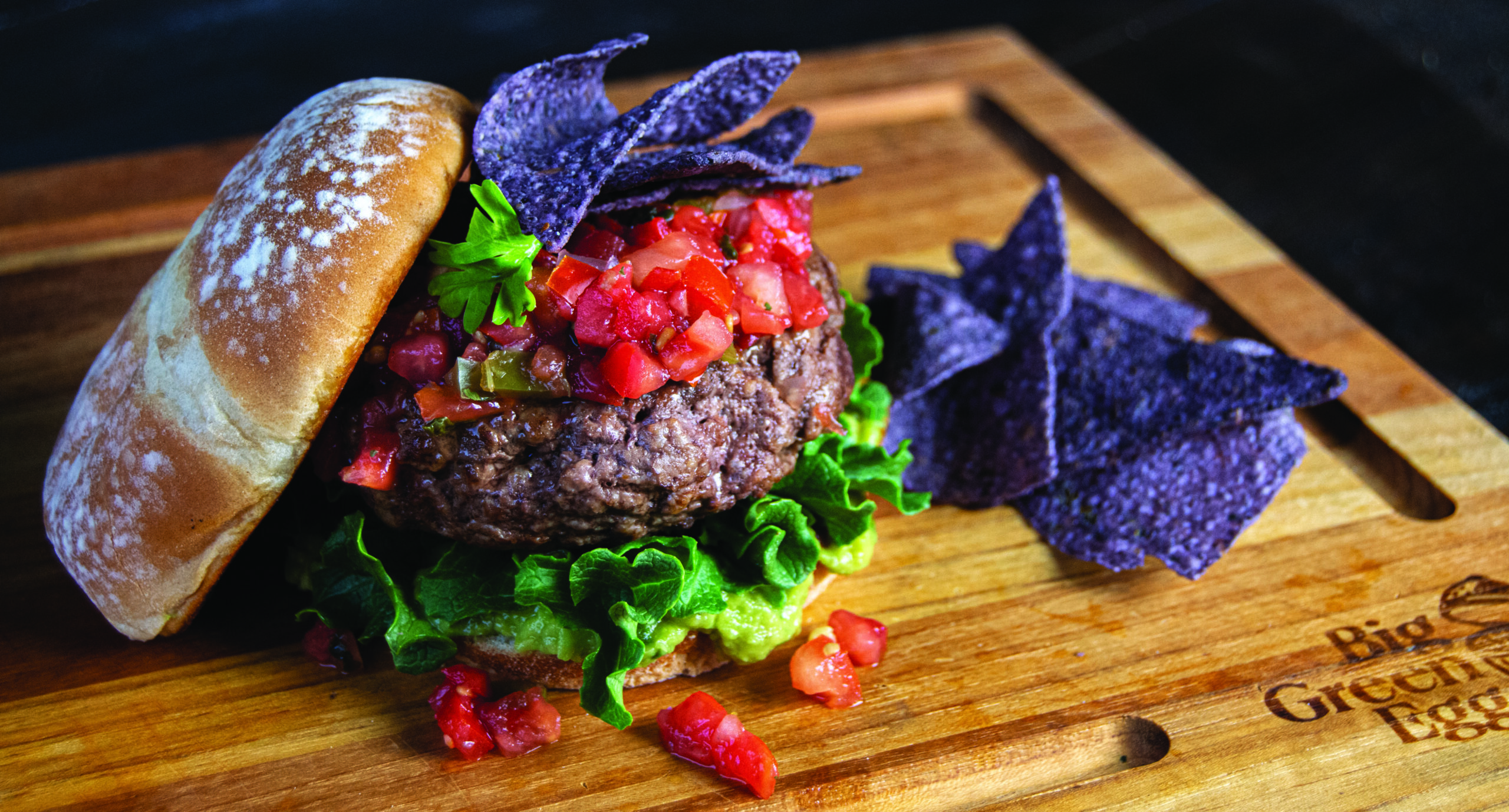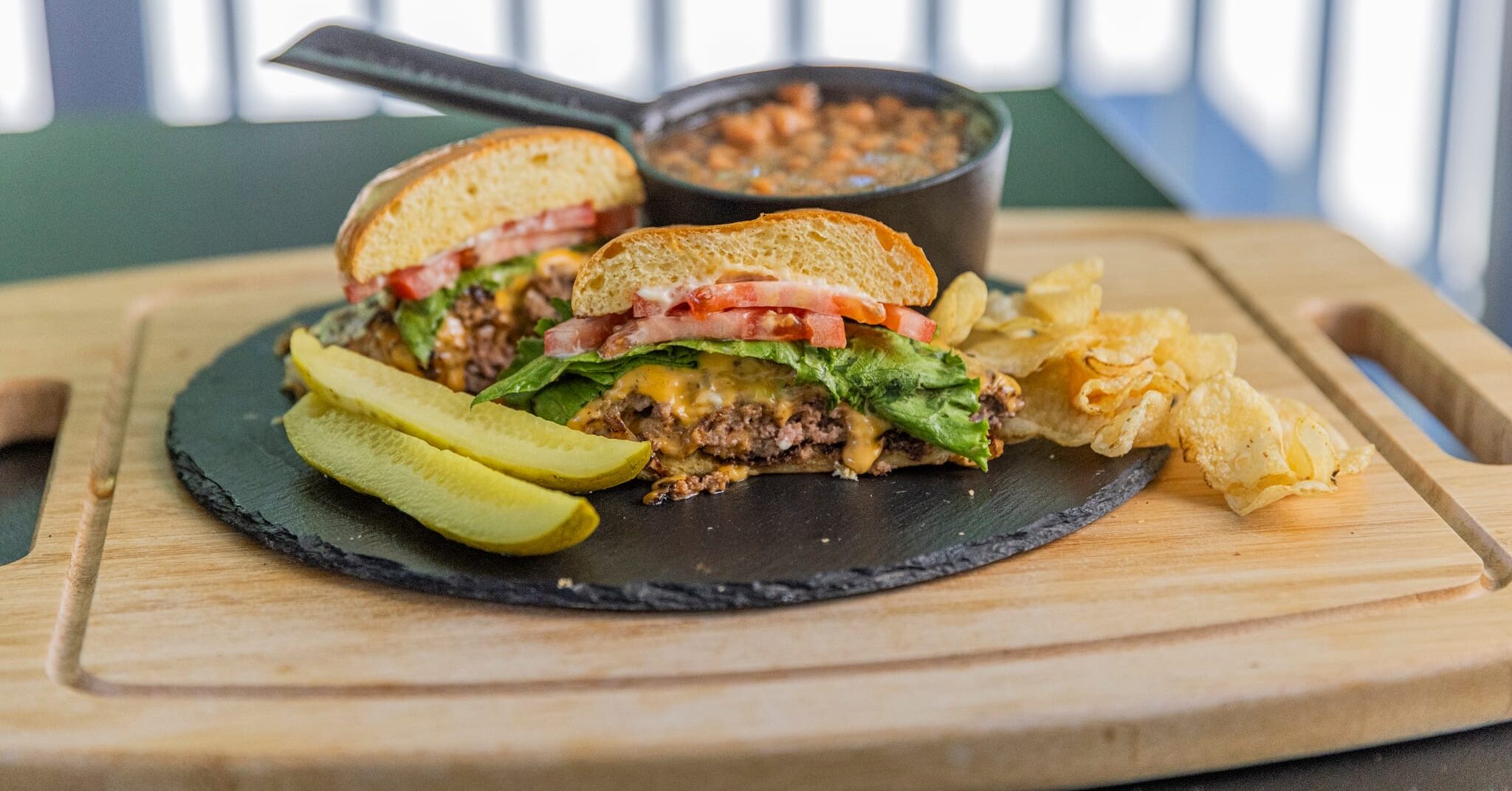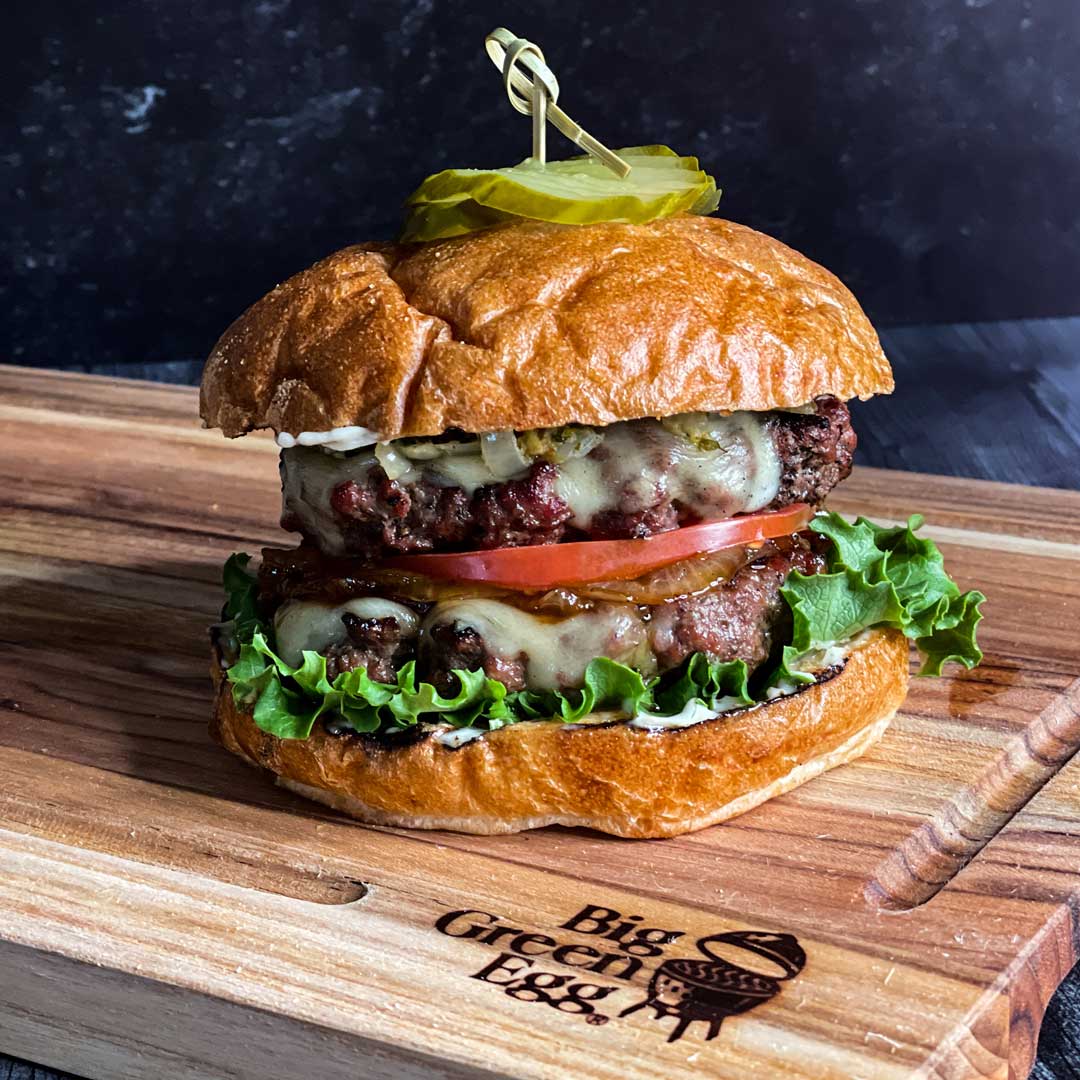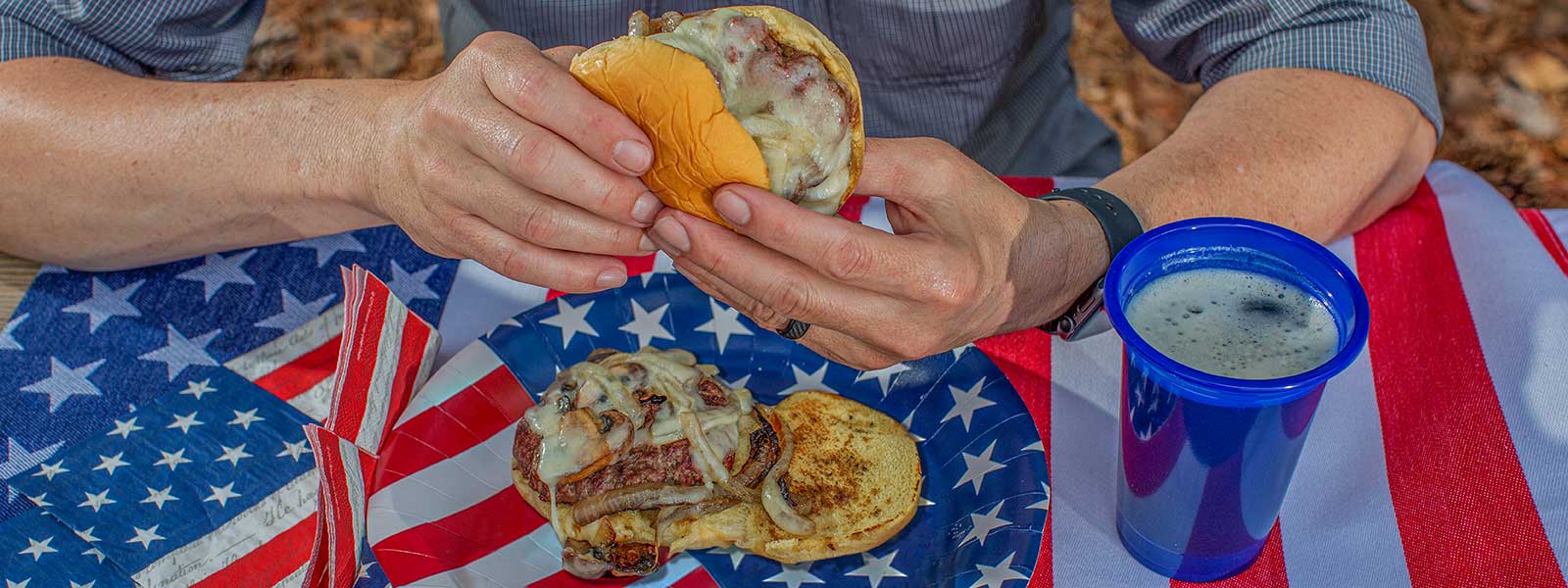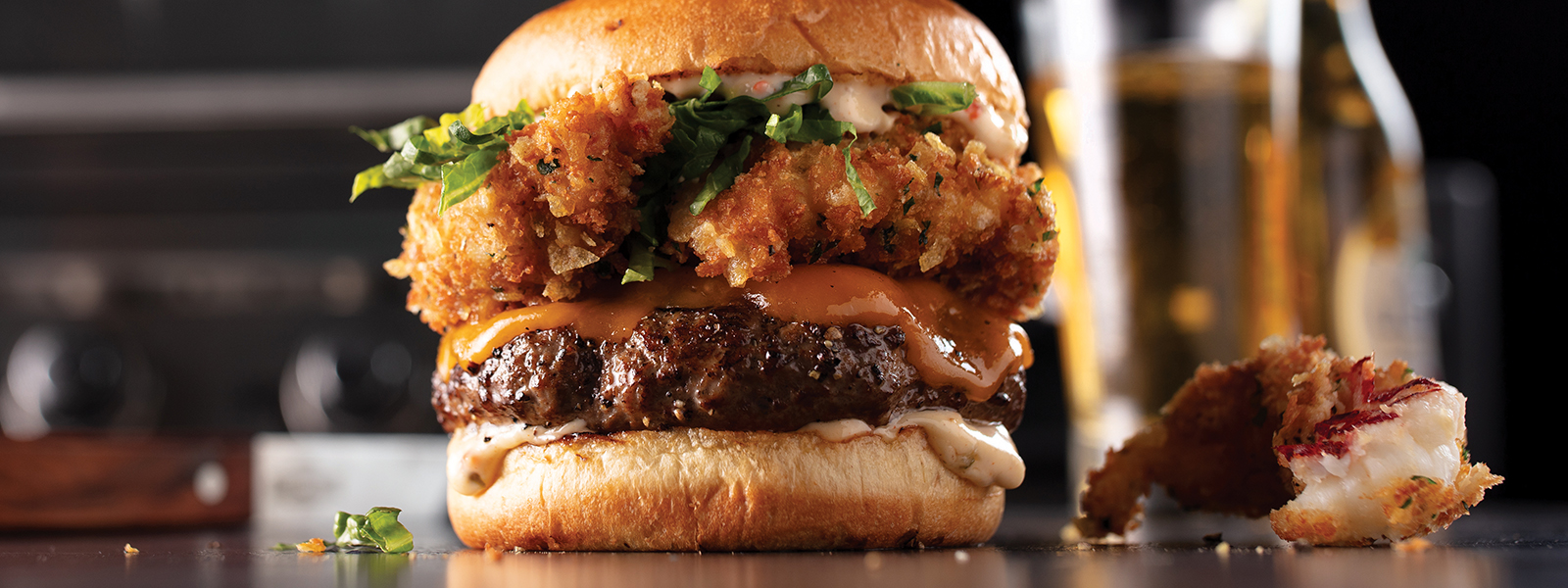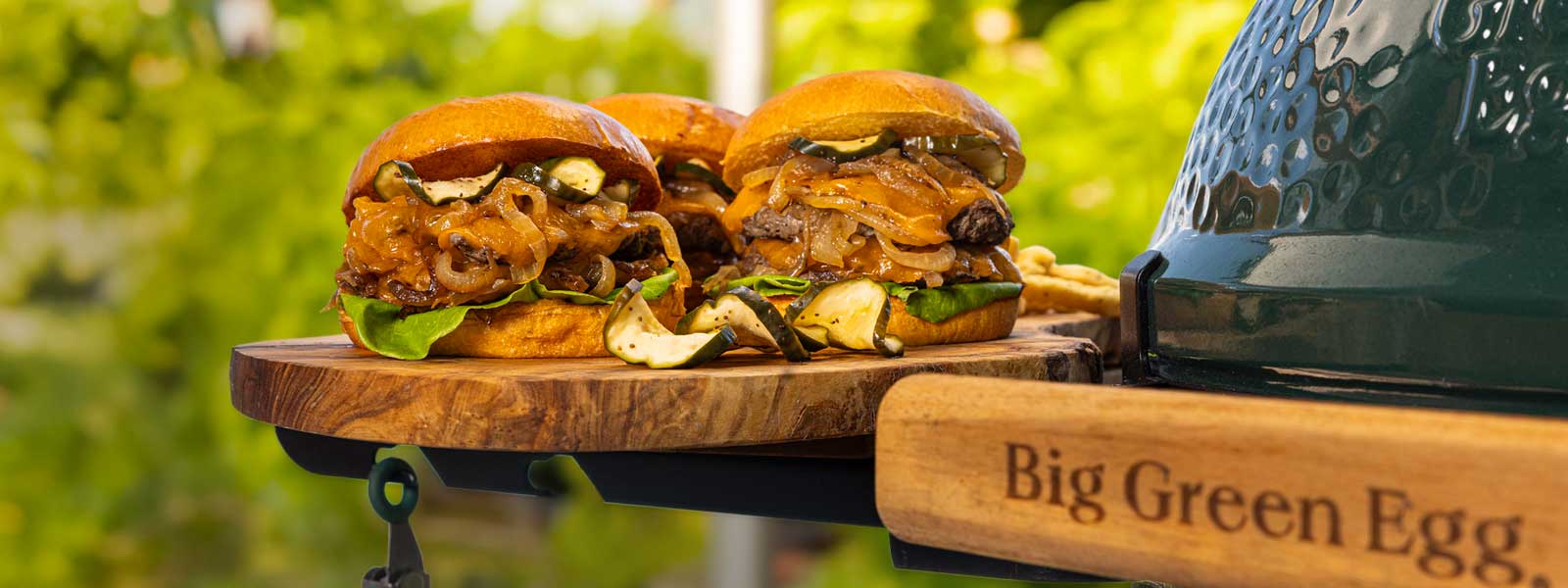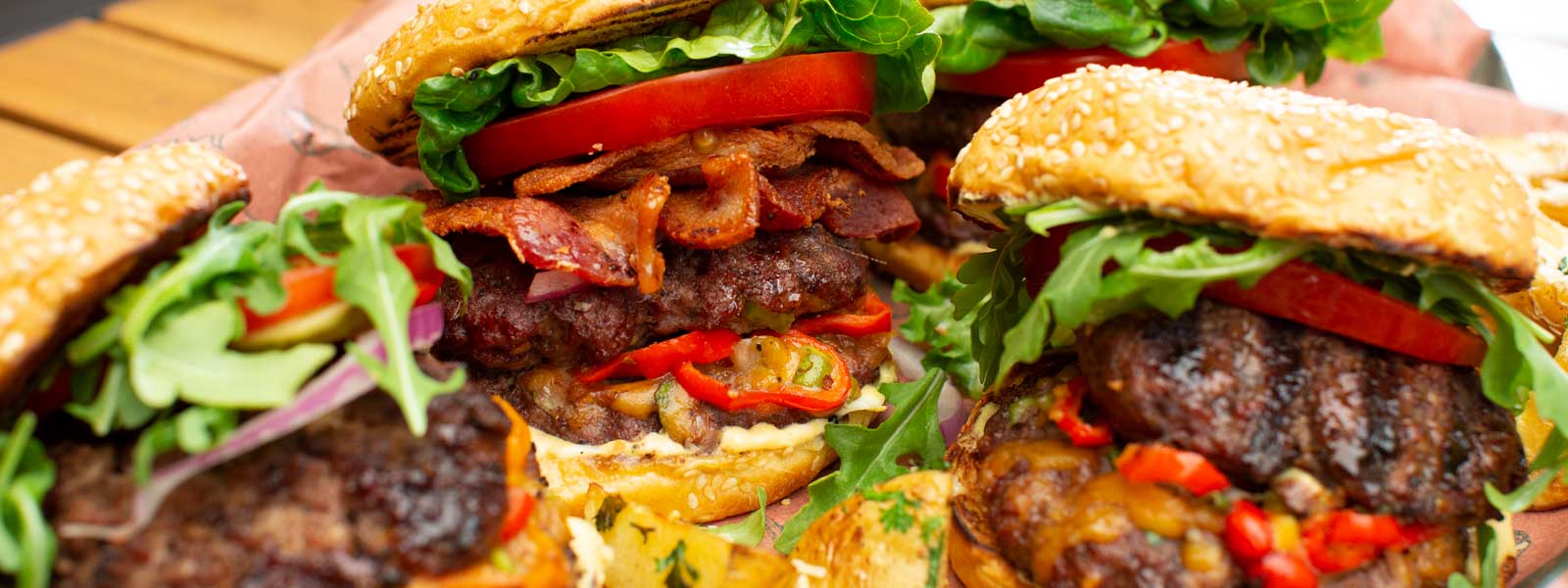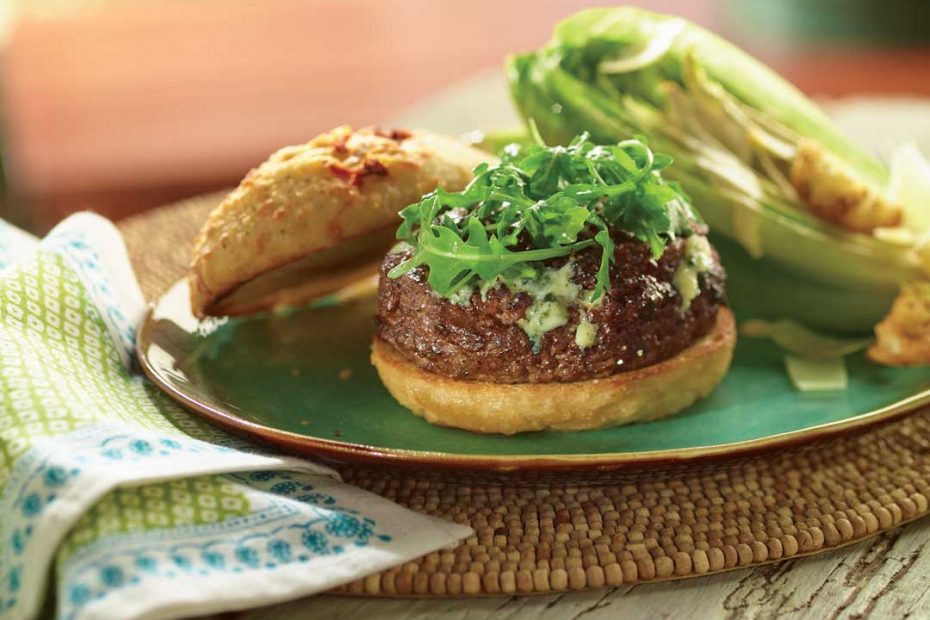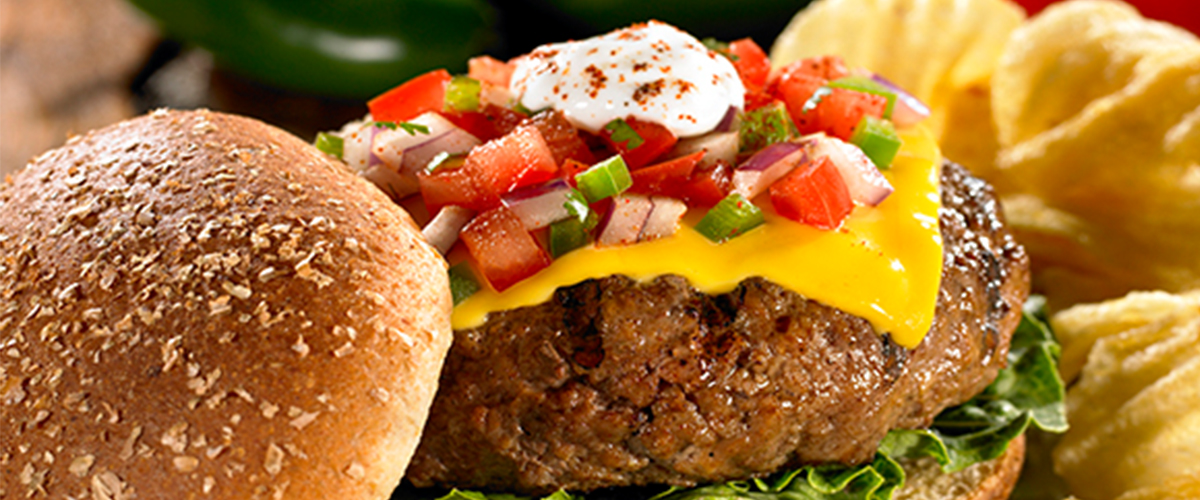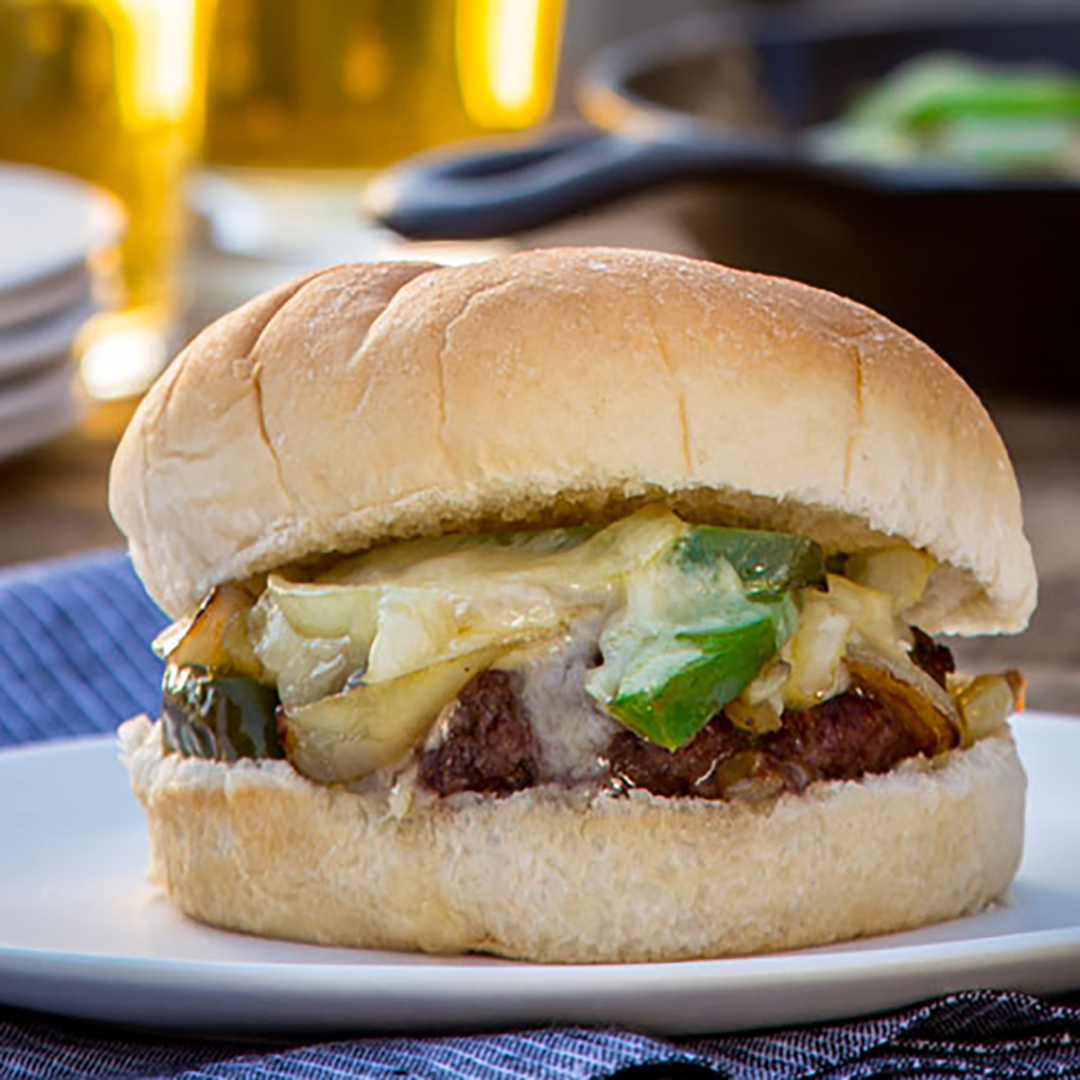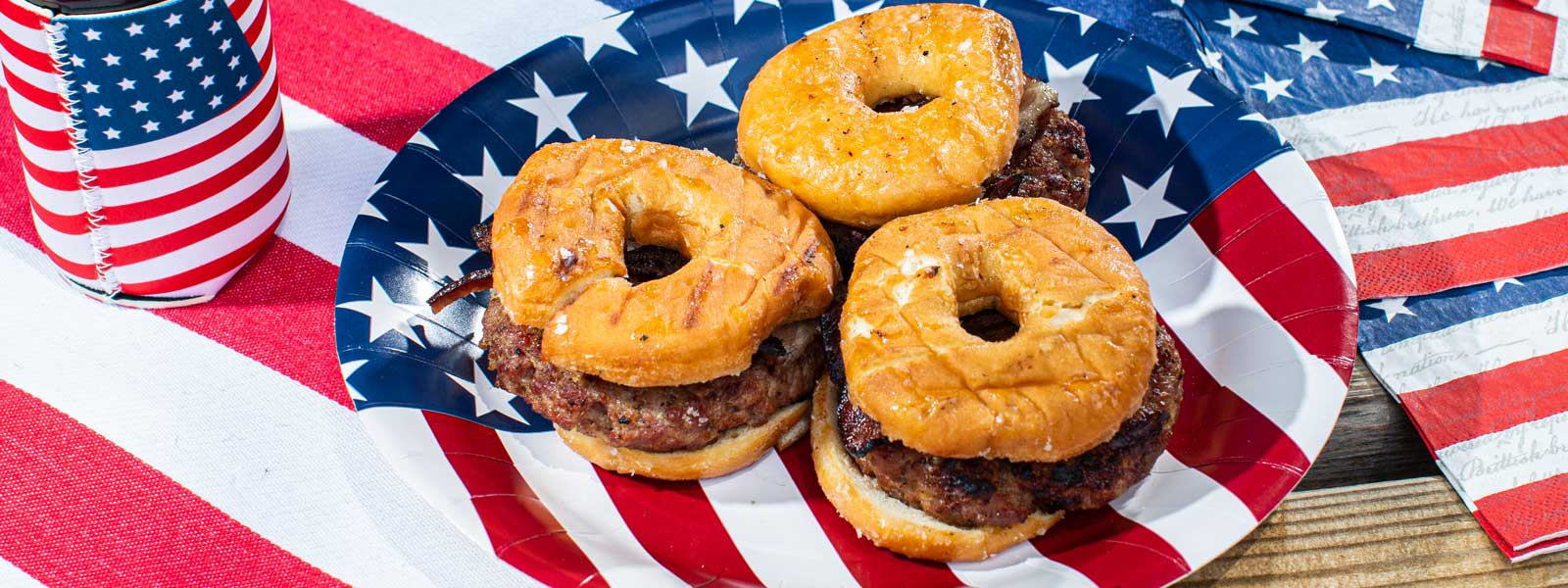Ode To the Burger
Story by Susan Marquez
What do you do when you need a quick meal on the go? Most likely, you pull into the closest drive-through for a burger. It’s convenient, utilitarian, compact, and delicious. That’s why millions of fast-food burgers are served each day in the United States and around the world.
A quick Google search shows several claims for the first hamburger ever made. It seems that before Americans claimed the hamburger, something similar existed in Europe’s culinary traditions, centering around, of course, the German city of Hamburg. A cookbook containing a collection of ancient Roman recipes dating to the early 4th century describes beef prepared with pine kernels, black and green peppercorns, and white wine. Apparently, the Romans had the burger on lock. Even medieval cuisine served minced meat.

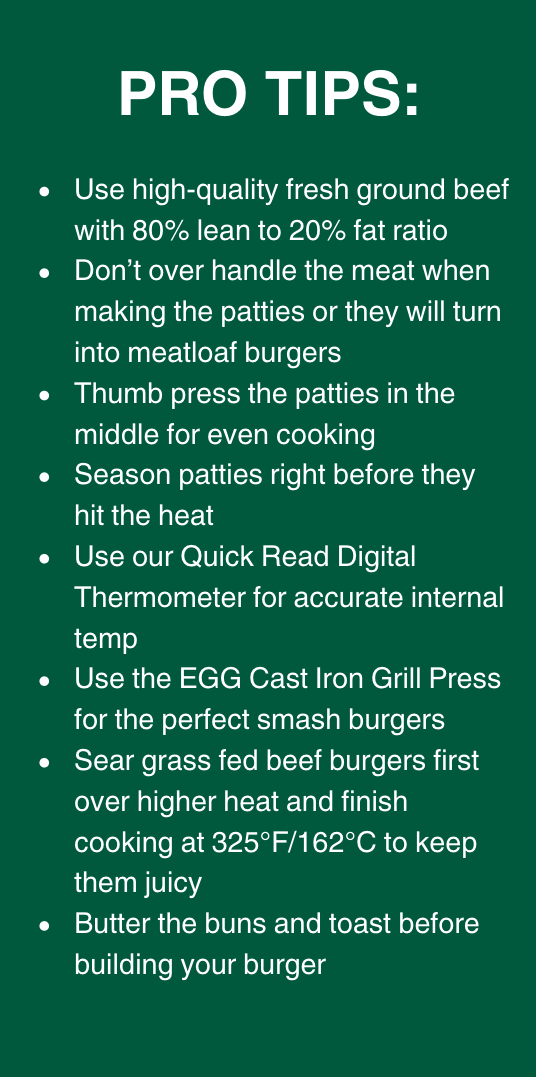
Both a 1980s documentary by the Dairy Queen ice cream chain and a book, The Complete Hamburger by Ronald L. McDonald (his real name), credit cook Fletcher Davis for putting ground beef patties between two pieces of Texas toast when one of his customers was in too much of a rush to sit down for a meal. “Ole Dave,” as Davis was known, began offering his new carryout meal as a regular item on his Athens, Texas restaurant menu by the end of 1880. Fletcher and his wife served their beef sandwiches at the St. Louis World’s Fair in 1904, although he didn’t yet have a name for his creation.
Americans readily adopted the hamburger during the period following World War I. As a matter of fact, the hamburger became a part of popular culture. The cartoon character, Popeye the Sailor, ate spinach to give him impressive strength. A supporting character in the Popeye cartoons was J. Wellington Wimpy (shortened to “Wimpy”), a gluttonous lover of hamburgers. A chain of burger joints that sold 10-cent hamburgers was called Wimpy’s in his honor. Another hamburger-loving cartoon character was Jughead, who first appeared in Archie comics in 1940.
People began grilling their own hamburgers while camping or picnicking. After World War II, when Americans started moving to the suburbs, backyard grilling caught on and by the 1950’s it was a popular pastime. The basic burger consisted of a grilled chopped beef patty and a hamburger bun. It was “dressed” with condiments including ketchup, mustard, and mayonnaise, and additions such as pickles, lettuce, and tomato were common. Just like the burger itself, the exact origins of the cheeseburger remain a mystery. Several chefs claim to be the first to add cheese on a burger.
Burger Recipes
As with many popular foods, the lowly hamburger was elevated to gourmet burgers, with fancy ingredients added to the beef. Even the beef itself has been elevated. Chefs can demand a high price for a burger made with Japanese wagyu beef. But not all burgers are beef. Around the world, people use what’s available, such as kangaroo meat in Australia, and some burgers are made of exotic meats such as bison, crocodile, ostrich, venison, and just about any other meat that can be ground and formed into a patty, including seafood. Other more traditional alternatives to beef include turkey, chicken, salmon, and pork. Some burger lovers eschew meat but will eat alternatives, such as veggie burgers made of black beans, quinoa, and chickpeas, as well as soy and pea protein.
No matter what kind of classic burger you prefer, cooking them on the EGG is always a crowd-pleaser. You can change up the flavor profile with the kind of Big Green Egg natural lump charcoal you choose and by adding various chips or chunks to the charcoal.
